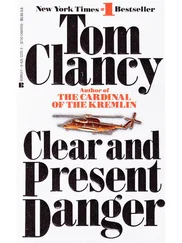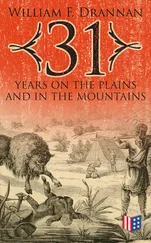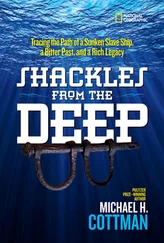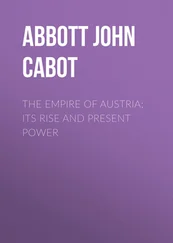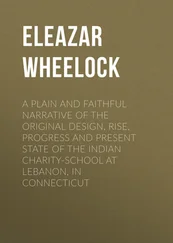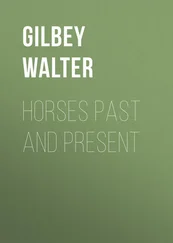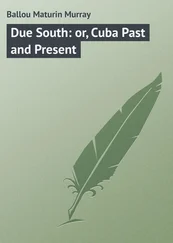William Brigham - Baltimore Hats, Past and Present
Здесь есть возможность читать онлайн «William Brigham - Baltimore Hats, Past and Present» — ознакомительный отрывок электронной книги совершенно бесплатно, а после прочтения отрывка купить полную версию. В некоторых случаях можно слушать аудио, скачать через торрент в формате fb2 и присутствует краткое содержание. Жанр: foreign_antique, foreign_prose, на английском языке. Описание произведения, (предисловие) а так же отзывы посетителей доступны на портале библиотеки ЛибКат.
- Название:Baltimore Hats, Past and Present
- Автор:
- Жанр:
- Год:неизвестен
- ISBN:нет данных
- Рейтинг книги:3 / 5. Голосов: 1
-
Избранное:Добавить в избранное
- Отзывы:
-
Ваша оценка:
- 60
- 1
- 2
- 3
- 4
- 5
Baltimore Hats, Past and Present: краткое содержание, описание и аннотация
Предлагаем к чтению аннотацию, описание, краткое содержание или предисловие (зависит от того, что написал сам автор книги «Baltimore Hats, Past and Present»). Если вы не нашли необходимую информацию о книге — напишите в комментариях, мы постараемся отыскать её.
Baltimore Hats, Past and Present — читать онлайн ознакомительный отрывок
Ниже представлен текст книги, разбитый по страницам. Система сохранения места последней прочитанной страницы, позволяет с удобством читать онлайн бесплатно книгу «Baltimore Hats, Past and Present», без необходимости каждый раз заново искать на чём Вы остановились. Поставьте закладку, и сможете в любой момент перейти на страницу, на которой закончили чтение.
Интервал:
Закладка:
Baltimore Hats, Past and Present
PREFACE
ITis not impossible that some useful information may be conveyed by this book. Should these pages prove of such service, their cost in labor is most cheerfully donated.
This volume is composed of a series of articles which appeared in a Trade Journal, covering a period of two years from 1887 to 1889. It must be accepted as but a brief history of an industry long identified with Baltimore.
Thanks are due the Librarian of the Maryland Historical Society and Mr. B. R. Sheriff for favors in lending rare and valuable old City directories; also to the many citizens who kindly aided and assisted in the search for needed information.
The Author.Baltimore, 1890.
INTRODUCTORY
PAST AND PRESENThave each their independent significance. The past gives freely to us the experiences of others, the present a suitable opportunity to improve upon what has already occurred. With our observation and acceptance of these privileges so easily obtained, we reap the benefit of their advantages and unconsciously find ourselves the gainers both in capacity and intelligence. A history of the past, giving the record of events and circumstances existing before our own day, bringing to our knowledge the accomplishments, business enterprises and undertakings of our predecessors, is a profitable study, and the reader gratifies his curiosity in observing how differently things were conducted and managed a century ago as compared with the processes of the present day, exciting a sense of wonder at the rapid progress that has been made in a comparatively short period of time. Think of it! quite within the lifetime of many of us have been the most wonderful of inventions – the steam engine, steam vessels, the telegraph and other wonders and triumphs of electricity. The wildest fancy may not be styled visionary in anticipating the appearance of things still more surprising.
Continued familiarity with the present system of making hats has the tendency in a great degree to prevent a recognition, until brought to our notice by comparison of the wide difference existing between the old and new methods, and this common every-day experience assists in making us unappreciative of the remarkable improvements that have been made in this branch of business.
Only a half a century ago the time required to make a single fur hat from the prepared material was fully a week, and the average production was two hats per day per man. With the bowing of the fur, the forming and shrinking of the bodies, and the handwork of finishing and trimming, all of which by the aid of modern science and invention is to-day done by machinery more perfectly and completely at the rate in production of twenty times that of fifty years ago, while the sewing of a straw hat, which could hardly be done in an hour by the plodding work of the hand, stitch by stitch, is, by the rapid sewing-machine, made in a minute. When we think of the largest number of stitches our mothers and sisters could take in their needlework by hand and contrast it with the result of the sewing-machine that spins its twenty-two hundred stitches a minute, we are able to gain some adequate idea of the saving of labor, and while we complacently accept these marvellous accomplishments, the question whether it be to the poor and needy a loss or gain is still an undecided problem. With all the advantages now at our command, it appears to us a matter of surprise how our forefathers, with their apparently indifferent methods, could profitably succeed in their labors. With steam engines, sewing-machines and electricity, the quick accomplishments of the present compared with the slow movements of the past tend to make one think we are living in an age of wonders amounting almost to miracles.
What would be the exclamation of the ghosts of our great-grandfathers who, with the rapid trot of an ox-team, drove to church miles away through the storms of winter to exemplify their devotion to the truth of their faith, if suddenly they could rise and observe the luxury of the present modes of transportation in convenient palace cars and palatial steamships, our comfortable and gaudy churches, and our easy ways of communicating instantly with those thousands of miles away from us? Aladdin's wonderful experiences, or the magical change by Cinderella's fairy god-mother, would appear tame to their intense surprise.
In a series of articles it is proposed to give an account of the growth of the hat manufacturing business, one of the most interesting of Baltimore's industries; how at an early period it was raised into conspicuous prominence in common with other enterprises undertaken in the active spirit which has always characterized Baltimore merchants as among the foremost of their time. They will also treat of its gradual growth and development, followed by a temporary decline of progress caused by the Civil War and its consequences, and finally of its triumphant stride to place itself again in line with other leading industries of this enterprising metropolis, for without doubt it holds to-day an enviable position among the different trades, a position acquired by the thoroughness, determination and perseverance of those engaged in its development.
EARLY DAYS
THEspirit of ambition and independence constituting the fundamental principles of manhood, and inspiring a nobleness of character which in time of the country's struggle for liberty helped to give her the benefits of wise counsel, noble patriotism and manly service, was early manifested by the neighboring colony of Virginia, as in the year 1662 she ventured upon a practical plan to encourage the manufacture of hats by offering a premium of ten pounds of tobacco for every domestic hat made of fur or wool. What resulted from this generous act we are not informed, but there is no evidence that it in any degree stimulated the production of hats in that colony, and it is a noted fact that hat-making to any extent has never flourished south of Baltimore. This city seems to have been the southern boundary line – the geographical limit in that direction – of hat-manufacturing. As an offset to this enterprising manifesto of Virginia is a petition in the year 1731 of the hat-makers of London to the "Lords of Trade," to enact a law forbidding the American colonists to wear hats not made in Great Britain. This law was passed, attaching a penalty of five hundred pounds sterling (twenty-five hundred dollars) for its violation.
The archives of the New Jersey Historical Society for the year 1731 show that there was one hatter in that colony, and from a history of Boston we learn that sixteen hat-makers of that town were affected by the edict of these despotic English law-makers.
In this manner were the enterprises of the new continent checked and the attempt made to crush out that spirit of progress so manifest in the brightest of the English colonies. It was the continuation of such injustice and oppression that eventually inspired a rebellious spirit to take the place of patience and submission, ending in a revolt, the termination of which secured us liberty and justice and the announcement of our complete independence on the 4th of July, 1776.
The style of hat of this period (1731) had the sides of the brim turned up, with a front of an easy curl, which, nearly resembling a cap-visor, made it in shape somewhat between a hat and cap; this seems to have been the first approach toward the "cocked" or three-cornered hat afterwards so extensively used, and to Americans the most familiar of past styles, from its being a fashion of the period of the Revolution, by which it became the prominent part of an historical costume. The arbitrary law before alluded to was afterwards modified, but an uncomfortable restriction continued to be enforced upon all manufactures, for in the year 1750 the English Parliament, among other unjust acts, enacted a law forbidding exportation of hats from one colony to another and allowing no hatter to have more than two apprentices at one time, "because the colonists, if let alone, would soon supply the whole world with hats."
Читать дальшеИнтервал:
Закладка:
Похожие книги на «Baltimore Hats, Past and Present»
Представляем Вашему вниманию похожие книги на «Baltimore Hats, Past and Present» списком для выбора. Мы отобрали схожую по названию и смыслу литературу в надежде предоставить читателям больше вариантов отыскать новые, интересные, ещё непрочитанные произведения.
Обсуждение, отзывы о книге «Baltimore Hats, Past and Present» и просто собственные мнения читателей. Оставьте ваши комментарии, напишите, что Вы думаете о произведении, его смысле или главных героях. Укажите что конкретно понравилось, а что нет, и почему Вы так считаете.

